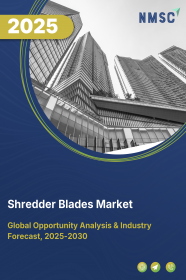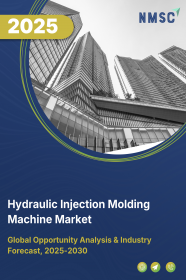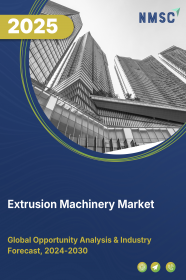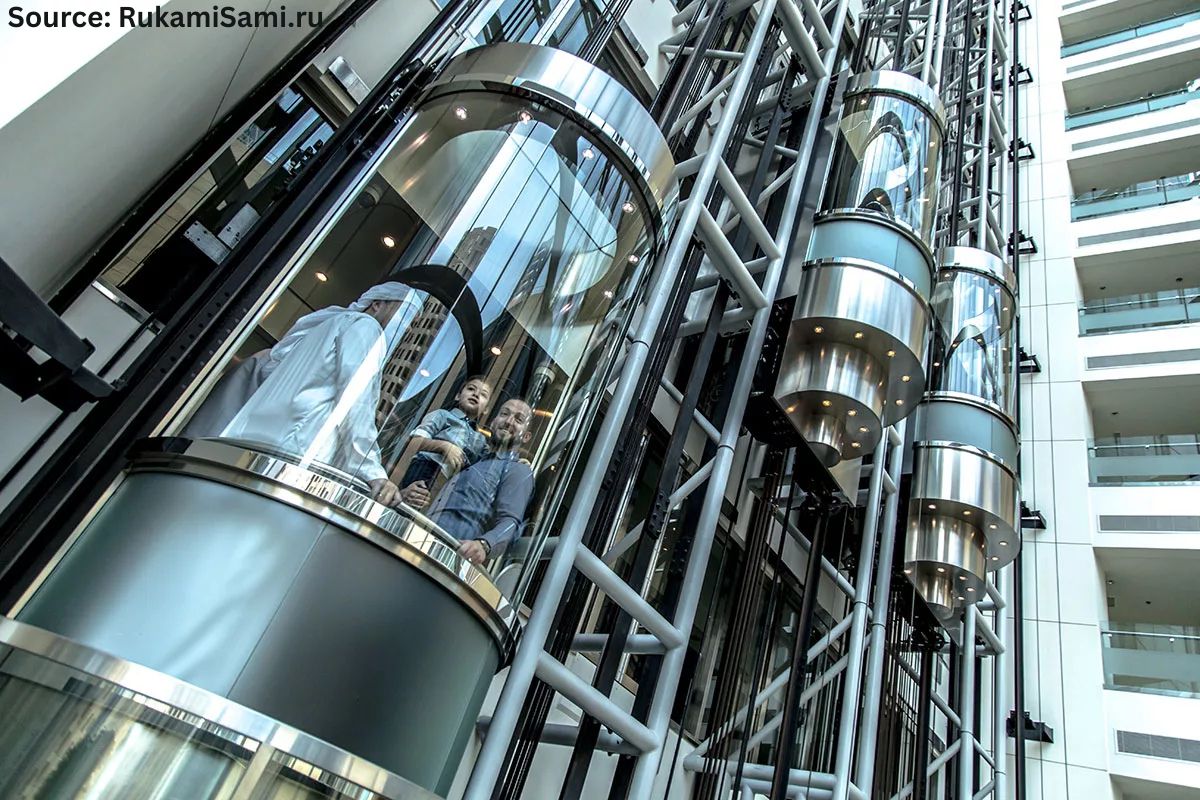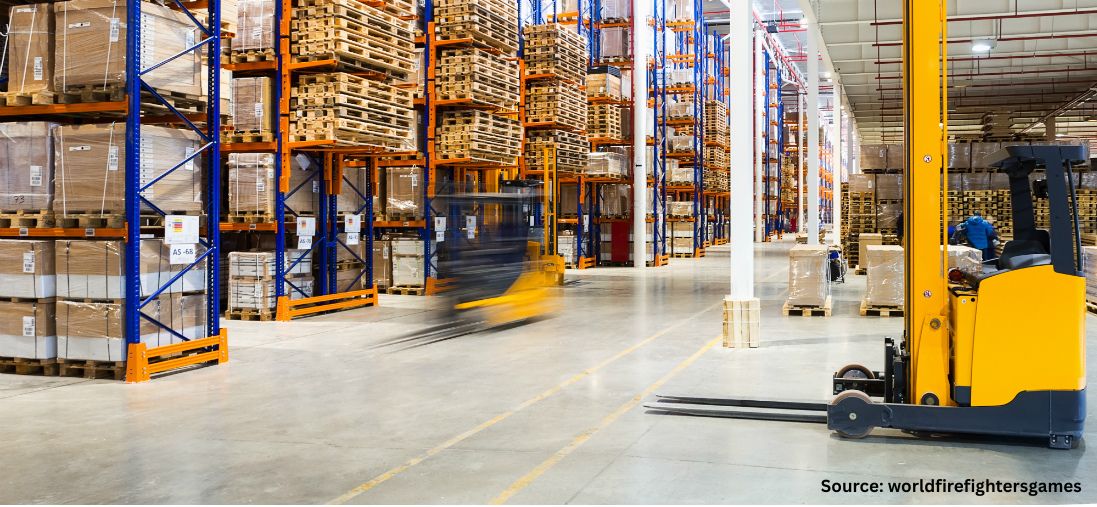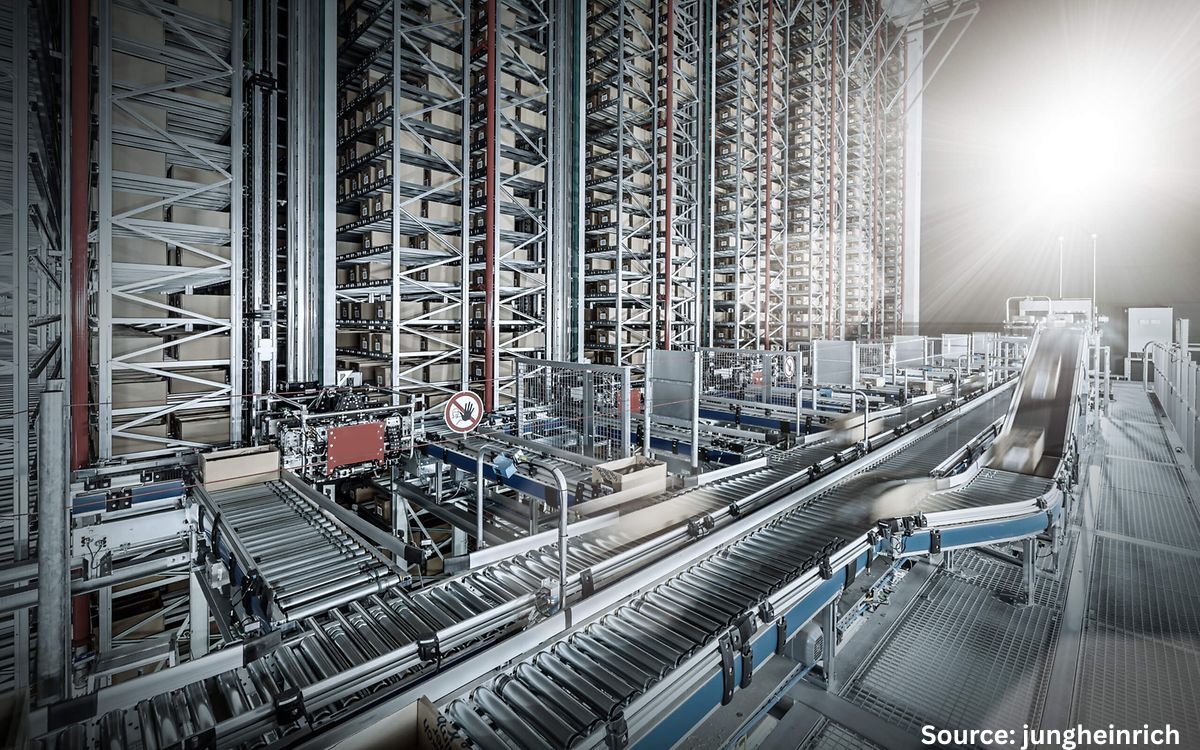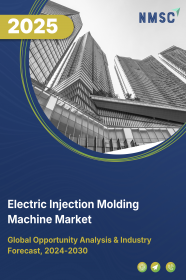
Electric Injection Molding Machine (EIMMs Market by Machine Type (Vertical Electric Injection Molding Machines, Horizontal Electric Injection Molding Machines, and Others), by Clamping Force (Below 200 Tons, 200-500 Tons, and Above 500 Tons), by Material (Plastic, Metal, Rubber, Ceramic, and Others), by Pressure Type (Low Pressure (Below 100 MPa)), and High Pressure (Above 100 MPa)), and Others – Global Opportunity Analysis and Industry Forecast, 2025–2030
US Tariff Impact on Electric Injection Molding Machine Market
Trump Tariffs Are Reshaping Global Business
Electric Injection Molding Machine (EIMMs) Market Overview
The global Electric Injection Molding Machine Market size was valued at USD XYZ billion in 2024 and is predicted to reach USD XYZ billion by the end of 2025. The industry is predicted to reach USD XXY billion by 2030 with a CAGR of XX% from 2025-2030.
The electric injection molding machine market is gaining momentum due to growing demand for energy-efficient solutions, especially in industries like automotive and plastics where precision, sustainability, and reduced energy consumption are key. Electric machines offer advantages over traditional hydraulic systems by consuming power only when needed, leading to cost savings and environmental benefits.
The rise of the automotive sector, with its focus on lightweight and high-precision parts, along with increasing applications in the plastics industry, further accelerates market growth. While high initial investment costs remain a challenge, the integration of IoT technologies offers new opportunities by enabling smarter, more efficient operations and supporting the transition toward digital manufacturing environments.
The Drive for Energy Efficiency Fuels the Market Growth
One of the most compelling driving factors behind the increasing adoption of all-electric injection molding machines is the significant potential for energy cost savings. Unlike their hydraulic counterparts, which continuously consume power while the system is running, electric machines utilize servo motors that only draw power when needed for specific movements. This on-demand energy usage translates to considerably lower electricity consumption, often leading to substantial reductions in operational costs over the machine's lifespan.
For instance, manufacturers are increasingly recognizing the long-term economic benefits of reduced power consumption, aligning with broader sustainability goals and improving their bottom line. This drive for energy efficiency is a major catalyst for the growth potential of the EIMM market.
Rising Growth of the Automotive Sector Accelerates the Market Growth
The growth of the automotive sector significantly drives the electric injection molding machine market expansion, as the industry’s increasing demand for lightweight, precision-engineered components aligns with the capabilities of energy-efficient electric machines. With global automotive production rebounding, the International Organization of Motor Vehicle Manufacturers reported a 10% increase in vehicle production in 2024, fueled by electric vehicle (EV) adoption.
Electric injection molding machines, which reduce energy consumption by up to 50% compared to hydraulic models according to the U.S. Department of Energy, are ideal for producing complex parts like battery housings, interior trims, and lightweight structural components critical for EVs.
Government initiatives amplify this trend, with the U.S. Department of Transportation allocating USD 7.5 billion in 2024 for EV manufacturing infrastructure under the Bipartisan Infrastructure Law. These policies, combined with the automotive sector’s shift toward sustainable materials and high-precision manufacturing, propel the electric injection molding market’s growth.
Surge in Growth of Plastic Industry Boosts the Electric Injection Molding Machine Market Growth
The growth of the plastics industry significantly fuels the electric injection molding machine market demand, as rising demand for high-precision, sustainable plastic components across diverse sectors aligns with the energy-efficient and versatile capabilities of electric machines. The global plastics market is expanding rapidly, with the U.S. Environmental Protection Agency reporting a 12% increase in plastic product demand in 2024, driven by applications in packaging, automotive, and electronics.
Electric injection molding machines, which offer up to 50% energy savings over hydraulic models as noted by the U.S. Department of Energy, are increasingly adopted for producing complex, lightweight plastic parts like thin-wall packaging and EV components, supporting the industry’s shift toward sustainability. Government initiatives further accelerate this trend, with the European Commission’s Circular Economy Action Plan allocating USD 200 million in 2024 to promote recycled plastic use and eco-friendly manufacturing processes.
These policies, coupled with the plastics industry’s focus on innovation and regulatory compliance, as evidenced by the Environmental Protection Agency’s guidelines on sustainable plastics, drive the electric injection molding market’s growth by enabling manufacturers to meet stringent environmental and performance standards effectively.
High Initial Investment Costs Limits the Market Expansion
A primary restraint in the widespread adoption of electric injection molding machines is their higher initial investment cost when compared to traditional hydraulic machines. While the long-term operational savings from reduced energy consumption and lower maintenance can often offset this initial expense, the significant upfront capital outlay can be a barrier for some manufacturers, especially smaller businesses or those with budget constraints. This cost factor can influence purchasing decisions, particularly in applications where the benefits of electric machines may not be immediately apparent or where high production volumes are not the primary concern.
Integration of Iot (Internet of Things) in Electric Injection Molding Systems Create Growth Opportunities
The integration of IoT (Internet of Things) in electric injection molding systems creates significant opportunities for market growth by enabling real-time monitoring, predictive maintenance, and data-driven process optimization, which enhance efficiency, reduce downtime, and improve product quality across industries like automotive, packaging, and healthcare. IoT-enabled systems allow manufacturers to track machine performance, detect faults early, and optimize energy use, with the U.S. Department of Energy reporting that IoT integration can reduce energy consumption in manufacturing by up to 20%.
A recent example is Arburg’s launch of the Allrounder 470 E Golden Electric in 2025, featuring advanced IoT integration through its Arburg host computer system (ALS) for real-time production control and predictive maintenance, achieving 10% higher output efficiency for electronics and healthcare applications.
By facilitating compliance with stringent regulations, such as the U.S. Environmental Protection Agency’s guidelines on sustainable production, and meeting rising demand for precision components, IoT integration drives the electric injection molding market’s expansion, capitalizing on the growing adoption of smart factories.
Market Segmentation and Scope of Study
The electric injection molding machine market report is segmented on the basis of machine type, clamping force, material, pressure type, end user, and regions. On the basis of machine type, the market is divided into vertical electric injection molding machines, horizontal electric injection molding machines, and others. On the basis of clamping force, the market is categorized into below 200 tons, 200–500 tons, and above 500 tons. Based on material, the market is segmented into plastic, metal, rubber, ceramic, and others. On the basis of pressure type, the market is bifurcated into low pressure (below 100 MPa) and high pressure (above 100 MPa). By end user, the market is segmented into automotive, packaging, electronics, healthcare, consumer goods, toy making, building and construction, home appliances, and others. Regional breakdown and analysis of each of the aforesaid segments includes regions comprising North America, Europe, Asia-Pacific, and RoW.
Geographical Analysis
The Asia-Pacific region's prominence in EIMM development is bolstered by government initiatives promoting industrialization and automation. In China, the "Made in China 2025" initiative emphasizes advanced manufacturing and energy-efficient technologies, providing tax incentives and subsidies for adopting electric machinery in industries like automotive and electronics. Japan's Ministry of Economy, Trade and Industry supports the "Society 5.0" vision, funding R&D for high-precision, eco-friendly manufacturing equipment to enhance productivity.
South Korea's "Smart Factory" program, backed by the Ministry of Trade, Industry and Energy, offers grants for automation and energy-efficient systems, driving EIMM adoption. India's "Make in India" initiative encourages domestic manufacturing through policy support for advanced technologies, including subsidies for energy-efficient machinery to meet environmental goals.
Europe's EIMM market thrives on innovation and regulatory support. The European Union's Horizon Europe program funds research into sustainable manufacturing technologies, including all-electric injection molding machines, to align with the EU Green Deal's carbon neutrality targets.
Germany’s Federal Ministry for Economic Affairs and Climate Action supports Industry 4.0 initiatives, providing grants for energy-efficient machinery development. The EU’s Ecodesign Directive sets strict energy efficiency standards, encouraging manufacturers to adopt clean technologies like EIMMs. Events like Fakuma are supported by regional governments, such as Baden-Württemberg’s Ministry of Economic Affairs, to promote advanced manufacturing solutions and circular economy principles.
In North America, government policies drive EIMM adoption in precision-demanding sectors. In the U.S., the Department of Energy’s Advanced Manufacturing Office provides funding for energy-efficient technologies, including EIMMs, to reduce industrial energy consumption.
The National Institute of Standards and Technology’s Manufacturing Extension Partnership supports automation and reshoring by offering technical assistance to manufacturers adopting advanced equipment. Canada’s Strategic Innovation Fund backs projects enhancing automation and sustainability in aerospace and automotive, promoting EIMM use. Tax credits under the U.S. Inflation Reduction Act further incentivize energy-efficient machinery to address rising utility costs.
EIMM adoption in regions like Latin America, the Middle East, and Africa is supported by emerging government efforts. Brazil’s National Development Bank offers financing for sustainable industrial equipment, encouraging EIMM use despite infrastructure challenges.
The United Arab Emirates’ Ministry of Industry and Advanced Technology promotes green manufacturing through its "Operation 300bn" strategy, providing incentives for energy-efficient machinery. South Africa’s Department of Trade, Industry and Competition supports industrial modernization via the Manufacturing Competitiveness Enhancement Programme, fostering gradual EIMM adoption. These initiatives align with global sustainability trends, though progress varies based on regional industrial and policy development.
Strategic Innovations Adopted by Key Players
Leading players in the electric injection molding machine industry are strategically focusing on innovation and expanding their product portfolios to cater to evolving market demands, driven by the need for precision, energy efficiency, and sustainability. A key recent development is the launch of new all-electric machine models with enhanced features, such as Milacron’s eQ180 all-electric injection molding machine debuted at Fakuma 2024, integrating monosandwich technology for multi-layer parts using post-consumer recyclable materials, achieving a 61.5-second cycle time with a 180-ton clamping force.
Stork introduced its Next Generation all-electric packaging machine in 2024, targeting sustainability goals with reduced energy consumption for high-volume, thin-wall products, while Engel launched the e-mac 500 in 2024, a 5000 kN all-electric machine for 4-liter container production, cutting energy use by 30% compared to hydraulic models, as supported by the European Commission’s green manufacturing initiatives.
Additionally, there’s a strong trend toward integrating smart technologies and automation, exemplified by Arburg’s Allrounder 470 E Golden Electric launched in 2025, featuring IoT-enabled Arburg host computer system (ALS) for real-time production control and predictive maintenance, enhancing output efficiency by 10%. These advancements align with the U.S. Department of Energy’s report of up to 50% energy savings from electric machines and are bolstered by government policies like the U.S. Department of Commerce’s USD 1.5 billion investment in advanced manufacturing.
However, challenges persist, including higher initial investment costs compared to hydraulic machines, potentially deterring smaller manufacturers, and limitations in handling extremely large-tonnage applications, as noted by the U.S. Small Business Administration. Nevertheless, significant opportunities exist in the growing adoption of electric injection molding machines across the medical sector, where the National Institutes of Health highlights demand for precision components, and the packaging industry’s focus on sustainable solutions, supported by the European Commission’s Circular Economy Action Plan, with continuous technological advancements further enhancing efficiency and market growth potential.
Key Benefits
-
The report provides quantitative analysis and estimations of the market from 2025 to 2030, that assists in identifying the prevailing market opportunities.
-
The study comprises a deep-dive analysis of the current and future electric injection molding machine market trends to depict prevalent investment pockets in the market.
-
Information related to key drivers, restraints, and opportunities and their impact on the electric injection molding machine market is provided in the report.
-
Competitive analysis of the players, along with their market share is provided in the report.
-
SWOT analysis and Porters Five Forces model is elaborated in the study.
-
Value chain analysis in the market study provides a clear picture of roles of stakeholders
Electric Injection Molding Machine Market Key Segments
By Machine Type
-
Vertical Electric Injection Molding Machines
-
Horizontal Electric Injection Molding Machines
-
Others
By Clamping Force
-
Below 200 Tons
-
200-500 Tons
-
Above 500 Tons
By Material
-
Plastic
-
Metal
-
Rubber
-
Ceramic
-
Others
By Pressure Type
-
Low Pressure (Below 100 MPa)
-
High Pressure (Above 100 MPa)
By End-User
-
Automotive
-
Packaging
-
Electronics
-
Healthcare
-
Consumer Goods
-
Toy Making
-
Building & Construction
-
Home Appliances
-
Others
By Region
-
North America
-
The U.S.
-
Canada
-
Mexico
-
-
Europe
-
The UK
-
Germany
-
France
-
Italy
-
Spain
-
Denmark
-
Netherlands
-
Finland
-
Sweden
-
Norway
-
Russia
-
Rest of Europe
-
-
Asia-Pacific
-
China
-
Japan
-
India
-
South Korea
-
Australia
-
Indonesia
-
Singapore
-
Taiwan
-
Thailand
-
Rest of Asia-Pacific
-
-
Rest of the World
-
Latin America
-
Middle East
-
Africa
-
Key Players
-
Shibaura Machine India Pvt.Ltd.
-
Engel
-
ARBURG GmbH + Co KG
-
Fanuc
-
Sumitomo Heavy Industries
-
Nissei Plastic Industrial Co., Ltd.
-
NSK Ltd.
-
TM Robotics
-
DKM Plastic Injection Molding Machine
-
Alvin Group
-
Boyan Manufacturing Solutions Limited
-
General Plastic Industries
-
Naresh Engineering Corporation
-
Haitian International
-
KraussMaffei
REPORT SCOPE AND SEGMENTATION:
|
Parameters |
Details |
|
Market Size in 2024 |
USD XYZ Billion |
|
Revenue Forecast in 2030 |
USD XX Billion |
|
Growth Rate |
CAGR of XX% from 2025 to 2030 |
|
Analysis Period |
2024–2030 |
|
Base Year Considered |
2024 |
|
Forecast Period |
2025–2030 |
|
Market Size Estimation |
Billion (USD) |
|
Growth Factors |
|
|
Countries Covered |
28 |
|
Companies Profiled |
15 |
|
Market Share |
Available for 10 companies |
|
Customization Scope |
Free customization (equivalent to up to 80 working hours of analysts) after purchase. Addition or alteration to country, regional, and segment scope. |
|
Pricing and Purchase Options |
Avail customized purchase options to meet your exact research needs. |

















 Speak to Our Analyst
Speak to Our Analyst



